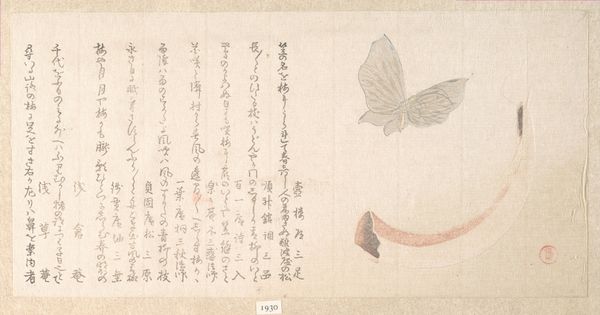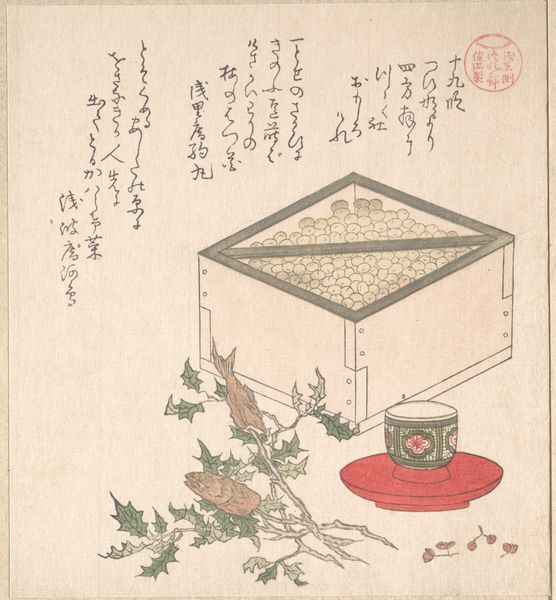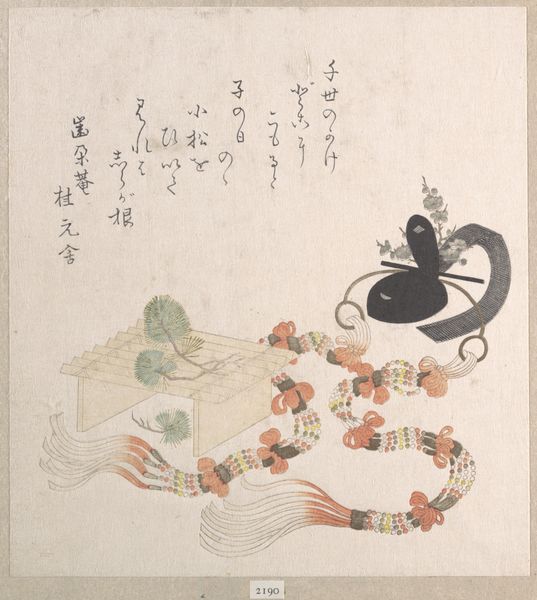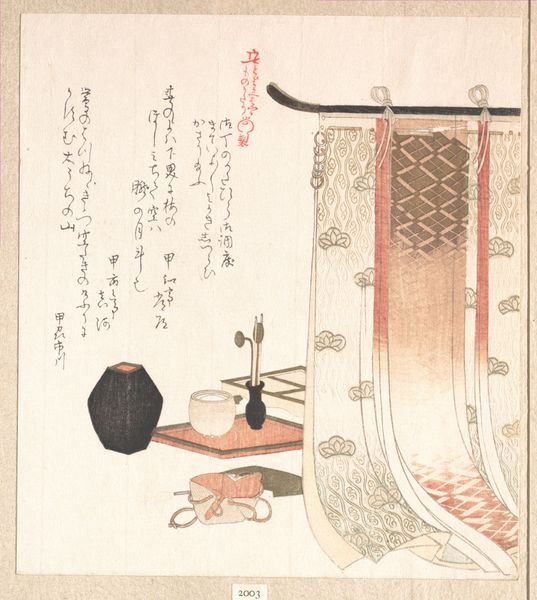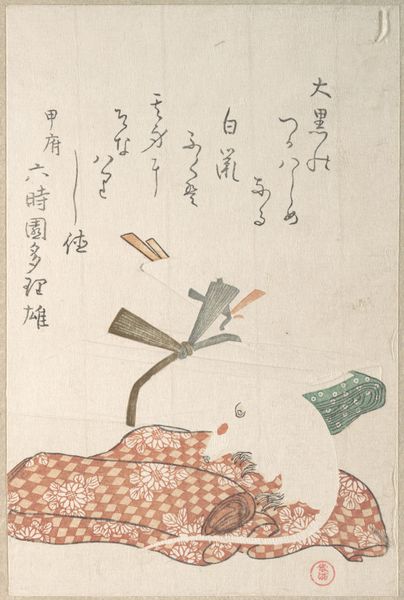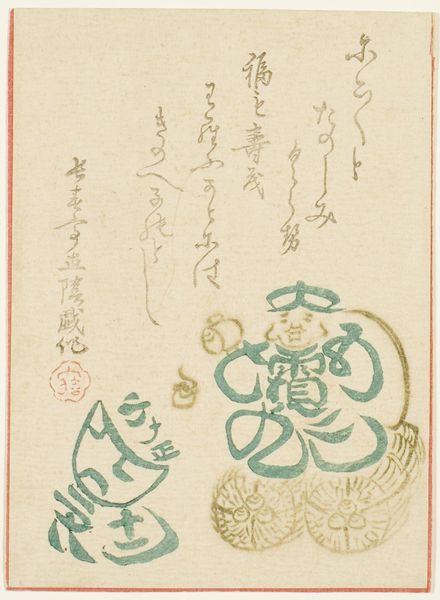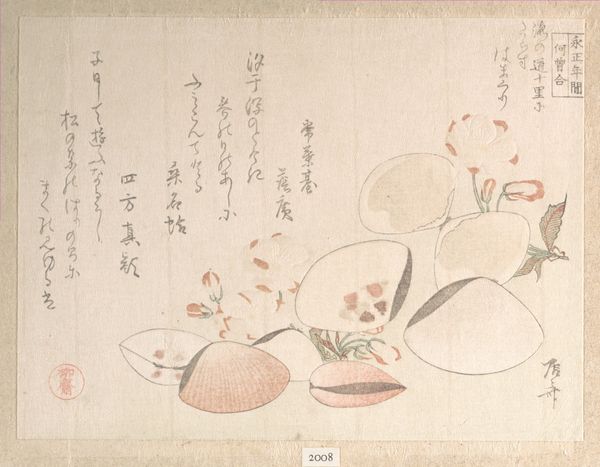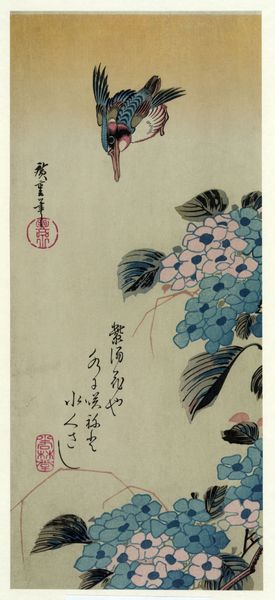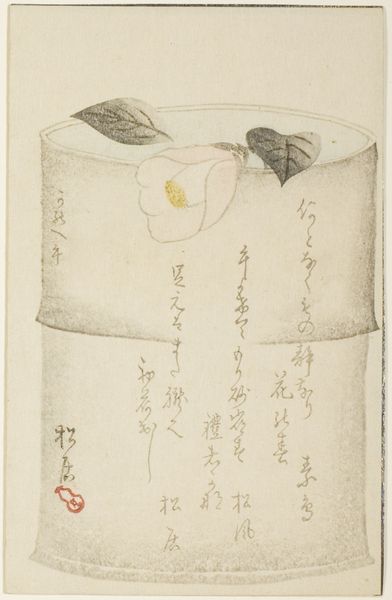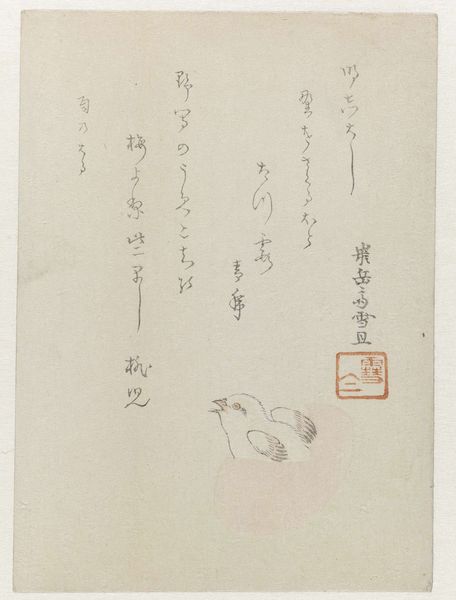
painting, print, watercolor
#
painting
# print
#
light coloured
#
asian-art
#
landscape
#
ukiyo-e
#
watercolor
Dimensions: 8 1/4 x 3 5/8 in. (21 x 9.2 cm)
Copyright: Public Domain
Curator: I'm struck by the subtle power of this Ryūryūkyo Shinsai print. It’s titled "Winter Cherries" and it dates from sometime between 1799 and 1823. What do you make of it? Editor: It's deceptively simple, isn't it? There's this pale ground with these softly colored berries scattered, almost floating, like scattered jewels. It has a sparse beauty that is immediately appealing. Curator: Agreed. Shinsai, of course, worked in the Ukiyo-e style, traditionally employing woodblock prints. But look closely. The materiality, or rather the seeming lack of it, subverts any notions of cheap mass production that often get thrown around when the subject of the process of printing is invoked. Editor: Indeed. The translucency is almost watercolor-like. You can practically feel the delicate paper they're printed on. This print speaks volumes about the techniques of production, its relationship to craftsmanship and artistry that go beyond the industrial. Considering the paper's sourcing and the complex, layered printing process would lead us closer to an understanding of Ukiyo-e tradition itself. Curator: Precisely. Now, look at the composition. The asymmetry and placement of the cherries, some hidden, some prominent. It steers clear of pure mimesis in favor of suggestive form. How do these elements combine, in your view? Editor: The asymmetrical placement is rather intriguing. It's as if Shinsai is rejecting perfect representation, moving towards something more intuitive. And the colors… such muted tones contrasted by the intense red hints to symbolic underpinnings, the passage of time or a fading of the past into present consciousness. Curator: Well put. This delicate balance that Shinsai creates is something to savor, and is magnificently embodied in its medium, offering insights that resonate beyond its modest dimensions. Editor: For me, examining this print reminds me of how artists during the Edo period elevated something commonplace to high art, emphasizing the value of artistic practices and reflecting much more beyond face value.
Comments
No comments
Be the first to comment and join the conversation on the ultimate creative platform.

